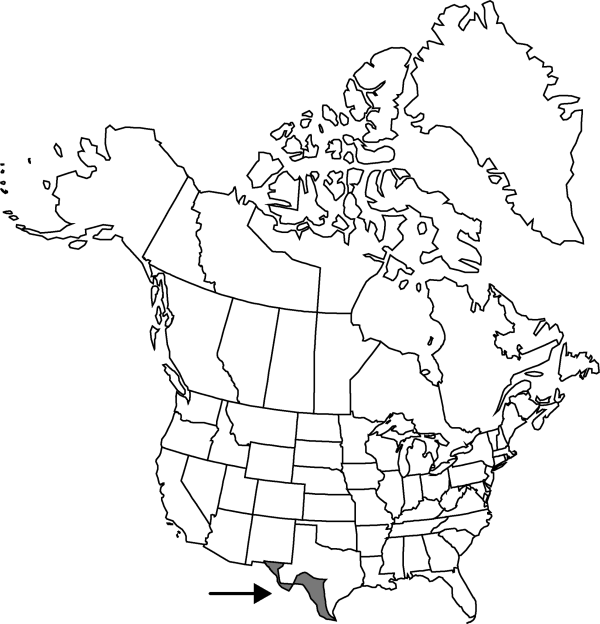Difference between revisions of "Echinocereus enneacanthus"
in F. A. Wislizenus, Mem. Tour N. Mexico, 111. 1848.
FNA>Volume Importer |
imported>Volume Importer |
||
| (6 intermediate revisions by 2 users not shown) | |||
| Line 1: | Line 1: | ||
{{Treatment/ID | {{Treatment/ID | ||
|accepted_name=Echinocereus enneacanthus | |accepted_name=Echinocereus enneacanthus | ||
| − | |accepted_authority=Engelmann | + | |accepted_authority=Engelmann |
|publications={{Treatment/Publication | |publications={{Treatment/Publication | ||
|title=in F. A. Wislizenus, Mem. Tour N. Mexico, | |title=in F. A. Wislizenus, Mem. Tour N. Mexico, | ||
| Line 22: | Line 22: | ||
|distribution=Tex.;Mexico. | |distribution=Tex.;Mexico. | ||
|discussion=<p>Varieties 2 (2 in the flora).</p><!-- | |discussion=<p>Varieties 2 (2 in the flora).</p><!-- | ||
| − | --><p>The commonly recognized concept of Echinocereus enneacanthus var. enneacanthus (W. O. Moore 1967; D. Weniger 1970; L. D. Benson 1982) pertained to the small eastern var. brevispinus.</p> | + | --><p>The commonly recognized concept of <i>Echinocereus enneacanthus </i>var.<i> enneacanthus</i> (W. O. Moore 1967; D. Weniger 1970; L. D. Benson 1982) pertained to the small eastern <i></i>var.<i> brevispinus</i>.</p> |
|tables= | |tables= | ||
|references= | |references= | ||
| Line 45: | Line 45: | ||
-->{{#Taxon: | -->{{#Taxon: | ||
name=Echinocereus enneacanthus | name=Echinocereus enneacanthus | ||
| − | + | |authority=Engelmann | |
| − | |authority=Engelmann | ||
|rank=species | |rank=species | ||
|parent rank=genus | |parent rank=genus | ||
| Line 57: | Line 56: | ||
|publication year=1848 | |publication year=1848 | ||
|special status= | |special status= | ||
| − | |source xml=https:// | + | |source xml=https://bitbucket.org/aafc-mbb/fna-data-curation/src/2e0870ddd59836b60bcf96646a41e87ea5a5943a/coarse_grained_fna_xml/V4/V4_306.xml |
|subfamily=Cactaceae subfam. Cactoideae | |subfamily=Cactaceae subfam. Cactoideae | ||
|genus=Echinocereus | |genus=Echinocereus | ||
Latest revision as of 21:57, 5 November 2020
Plants branched forming dense or lax clumps with 20–100(–500) branches, usually branching before flowering. Stems some-what lax often sprawling, longest stems sometimes prostrate, cylindric, 8–40(–100?) × 3.2–15 cm; ribs (6–)7–10(–12), crests essentially uninterrupted; areoles (11–)14–52 mm apart. Spines 6–14 per areole, straight or central spines slightly curved throughout their lengths, ± opaque, white, pale tan, or purplish gray, often extensively tipped or banded with brown; radial spines 5–10(–13) per areole, 9.5–40(–47) mm, usually less than 1/2 as long as central spines; central spines 1–4(–5) per areole, all or mostly projecting, abaxial spine porrect or descending, frequently compressed or angular in cross section (sometimes sulcate, keeled, or striate), (12–)20–84(–96) mm. Flowers (4.5–)5–7.5 × 5–5.6(–9) cm; flower tube 10–30 × 10–22(–40) mm; flower tube hairs 1–2 mm; inner tepals pink or magenta, darkest proximally, 28–55 × 8–14(–20) mm, tips relatively thin and delicate; anthers yellow; nectar chamber 4–6 mm. Fruits pale yellow-green or dull reddish, 20–30 mm, pulp white or pale pink. 2n = 22.
Distribution

Tex., Mexico.
Discussion
Varieties 2 (2 in the flora).
The commonly recognized concept of Echinocereus enneacanthus var. enneacanthus (W. O. Moore 1967; D. Weniger 1970; L. D. Benson 1982) pertained to the small eastern var. brevispinus.
Selected References
None.
Key
| 1 | Stems (5-)8-14(-15) cm diam.; radial spines 5-8(-9) per areole; central spines 56-84(-96) mm | Echinocereus enneacanthus var. enneacant |
| 1 | Stems slender 3.2-4.5(-7.5) cm diam.; radial spines 8-10(-13) per areole; central spines (12-)20-44(-50) mm | Echinocereus enneacanthus var. brevispin |